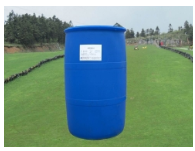In recent years, although the small functional varieties of surfactants have developed rapidly, there is still a big gap between the total number of varieties and the demand of developed countries and industries. It is still necessary for the whole industry to make joint efforts, innovate and tackle key problems, develop new varieties, and then fill the gap, catch up with the development, and adapt to the demand.
With the rapid development of China's construction industry, the development of building materials additives is fast and the cycle is relatively short. For example, polycarboxylic acid type water reducer with TPEG, hPEG, MPEG and other polycarboxylic acids as the main body, the output reached about 3.2 million tons in 2015, the output of ethoxylated monomer was close to 1 million tons, and building materials additives such as foaming agent and dispersant with AOS as the main body also reached 10000 tons. With the development of tertiary oil recovery technology and demand, surfactants for tertiary oil recovery, such as heavy alkylbenzene sulfonate, petroleum sulfonate and petroleum carboxylate, have been developed successively in China, with the output reaching 35000 T / A and widely used in industrial oil production.

In the aspect of industrial cleaning, a batch of special surfactants for industrial cleaning have been researched and developed in succession, especially their high alkali resistance, acid resistance and salt resistance, which make their application develop rapidly. For example, fc-06, a high alkali resistant surfactant for cleaning in iron and steel industry and electroplating industry, fc-41 series surfactants for electronic industry, alcohol ether sulfonate, a high salt resistant surfactant for petroleum industry, etc.
Nonionic surfactant molecules do not have charge in the water medium, but generally contain highly polar components, such as polyoxyethylene group. Amphoteric surfactants may be negatively or positively charged depending on the pH of the solution.
At low concentrations, surfactant molecules are nonassociated monomers. With the increase of surfactant concentration, the attraction and repulsion between molecules will form self-assembly phenomenon, which will lead to the formation of monolayer structure or micelle. The concentration at which the micelles are formed is called the critical micelle concentration (CMC). The properties of micelles can be controlled by the slight change of the molecular chemical structure of surfactants or by changing the conditions of the dispersed phase. It is well known that the change of pH, ionic strength and temperature can affect the particle size and shape of surfactant micelles. In some cases, the size of micelles may be affected by the concentration of alkyl glycosides.